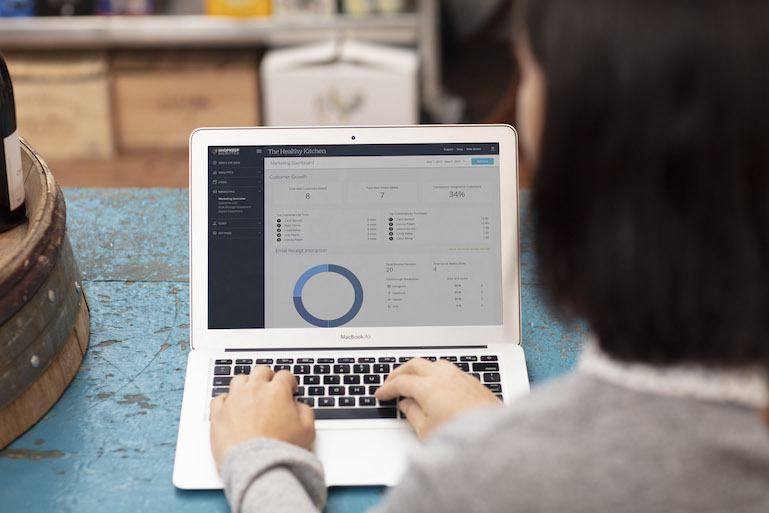
Small Business Basics: What is a Cash Flow Analysis?
As a small business owner, you are no stranger to the essentiality of cash. The way money circulates through your business (aka cash flow) is a key indicator of its success.
Running out of cash is the number one cause of failure for small businesses: without money to meet regular payments like payroll and rent, it becomes impossible to stay afloat.
While having extra cash doesn’t exactly fall into the category of problems your business may have, it is a rarity that, throughout your entire enterprise, nothing needs improvement. If you are properly monitoring your cash flow and you discover a significant surplus of cash on hand, that money can probably be used more efficiently than if it were to just continue to sit idly in your business’s bank account.
Understanding your cash flow and doing regular analysis is vital as it will help you evaluate the performance of your business and avoid the nightmare of suddenly having no cash in the bank—here’s why.
SEE ALSO: 10 Reasons Why Small Businesses Fail (And How to Avoid Them)
What is Cash Flow, and What is a Cash Flow Analysis?
Cash flow, by definition, is simply the way that all money moves in and out of your business; it represents how much cash you have on hand, and what you have remaining after you’ve paid your bills and expenses.
Positive cash flow indicates that your inflows are exceeding your outflows (more cash is coming in than leaving) and negative cash flow indicates that your outflows are exceeding your inflows (more cash is leaving than coming in).
Inflow is the money coming in from sales, accounts receivable, and borrowed capital like term loans or lines of credit, while outflow is the money going out through accounts payable, payroll, and other expenses like loan payments and rent.
Profit and cash flow are often mistakenly conflated as being the same thing, but they differ in a few crucial ways. First, cash flow takes into account all of the cash that your business has spent in a given period of time—this means that your business can be profitable, but still have negative cash flow.
Additionally, because cash flow only reflects what’s happening in your business’s bank account (i.e. the money you have on hand), it does not include any pending payments in accounts receivable or pending liabilities in accounts payable (unlike profit). Only assets and liabilities that can be linked to a completed cash transaction will be illustrated by your cash flow.
This is what differentiates cash and accrual accounting; accrual accounting recognizes income when it is earned versus when payment is actually received. Cash accounting only recognizes income once cash is in the bank.
Where profit is equal to a business’s net income, cash flow reflects the amount of money the business actually has on hand to meet operating expenses; this is what makes performing a cash flow analysis one of the best ways to gauge the stability of your business.
When we say cash flow analysis, we just mean conducting an analysis that measures the amount of cash being produced and spent by a company during a specified period of time.
Why is Analyzing Cash Flow Important?
When measuring the financial health of your business, adequately monitoring your cash flow, rather than solely relying on the metrics provided by accrual accounting (i.e. net income), is essential because of the unknowns that accounting allows for.
For example, a business that is seen as profitable from an accounting perspective could run into serious trouble if accounts receivable become past due or if the profits being generated from sales are, in practice, not covering all expenses.
The cash flow statement does not allow for the more lenient conclusions (as described in the above scenario) that one might draw if only looking at the income statement or the balance sheet. For example, if you invoice a client for $5,000 with payment terms of 45 days, this would be accounted for immediately in terms of your profit — whereas, with cash flow, this wouldn’t be recorded until the cash was in your bank account. See the difference?
Not to mention, cold hard cash is a universally accepted measure; when you calculate your cash flow it is indisputable, unlike net income which can be manipulated to make a business appear more profitable than it actually is by including or not including certain assets/liabilities. If you can show that your company historically has positive cash flow, it is widely agreed that this is an adequate measure of success.
How to Do a Cash Flow Analysis
Whether using the direct or indirect method, the cash flow statement is broken up into three parts: operations, financing, and investing. The key to remember is that the cash flow statement only accounts for cash and cash equivalents.
Cash Flow from Operating Activities (CFO)
This category of the cash flow statement encompasses the cash inflows and outflows from daily operations.
Cash inflows from operations include income received from sales transactions, excluding any sales made on a credit basis. A sale made on credit will not be factored into cash from operations until the payment has been deposited in the business bank account (only reflects paid receivables).
Cash outflows from operations include payments made toward things like payroll, payments to suppliers for inventory, taxes (which are not related to investing or financing), insurance and the like.
The direct method of crafting your cash flow statement will only list the cash received from sales from customers and cash spent on paying suppliers and employees to arrive at cash flow from operating activities. This method is less widely used than the indirect method.
When using the indirect method to calculate cash flow from operating activities (CFO), you start with net income and then make adjustments for the following:
- Depreciation: depreciation isn’t actually a way that businesses receive cash, but, because net income on the income statement is decreased by depreciation expense, you add it back when getting to CFO (inflow).
- Accounts Receivable: when accounts receivable increases, you subtract from CFO (outflow).
- Inventory: when inventory increases, you subtract from CFO (outflow).
- Accounts Payable: when accounts payable increases, you add it back to CFO (inflow) because you have not spent the cash yet.
- Accrued Expenses: if accrued expenses decrease, that means you’ve begun to pay a portion of these expenses off. This decrease is subtracted from CFO (outflow).
Cash Flow from Financing Activities (CFF)
All debt and equity transactions fall into the cash from financing category.
- Inflows in this category make up any external business funding that your company receives.
- Any payments made toward repaying debt from financing are considered outflows.
Cash Flow from Investing Activities (CFI)
For distinguishing inflows and outflows in this category from operations, think larger scale long- term fixed assets.
- Inflows from investing include the sale of company equipment or property.
- Outflows include purchases of long term assets like equipment or property.
This section would also include investments like stocks and bonds.
When you get your final numbers for CFO, CFF, and CII you’ll combine them to get to the last line of your cash flow statement: your net cash balance.

Insights from Performing a Cash Flow Analysis
Your net cash balance represents how much cash your business has on hand during the given reporting period. In other terms, it shows you how much liquidity you have or don’t have. This is an important indicator of the financial health of your business.
The cash flow statement also allows you to see exactly what you are spending your money on and when. You’ll be able to discern patterns of inflows and outflows that can help you to budget more effectively, and improve your small business cash flow, so you can plan for things like making big purchases or taking on a new hire. The more often you conduct cash flow analysis, the more information you’ll gain about the spending patterns of your business.
Comparing metrics from your other financial statements with information from the cash flow statement can also be really informative. For example, if you wanted to see how much of your profit from sales is actually making it to the bank and not toward overhead, you’d look at your ratio of cash flow from operations to your net sales. If your cash flow from operating activities is low despite a high net sales, you know your profits are not sustaining your expenses very well.
You can also use your net cash from operating to calculate free cash flow (FCF). One way to calculate FCF is: net CFO – capital expenditures.
Free cash flow is important because it illustrates how efficiently your company generates cash; this will be an important number if you’re looking to get a valuation for your company for investors.
The Bottom Line
Monitoring, projecting, and analyzing the cash flows of your business provides you with a basic litmus test for determining the financial health of your company. Deductions from analysis of your cash flow give lenders valuable insight into your business’s ability to repay a loan, and provide you with information that can increase your operational efficiencies.
In running a business, information is power; the information provided to you by performing a regular cash flow analysis is some of the most invaluable information available. You cannot afford to be ignorant of problems relating to your business’ cash generation—being privy to these problems before they lead to a shortage of cash is a responsibility that your company’s livelihood will depend on.
Beyond avoiding sheer disaster, the smaller insights you will gain from cash flow analysis into the way profit moves through your business model and other relevant patterns of spending can encourage improvements company-wide.
SEE ALSO: Need to improve cash flow in the short-term? Check out ShopKeep Capital.
Want to try ShopKeep for yourself?
Just answer a few easy questions.
Need help finding the right point of sale?
Just complete the form. We’ll call you right back to explain how ShopKeep can work for you.
Hit the ground running.Sprinting, in fact!
Read our free, comprehensive guide, Small Business 101, to learn all you need to know about starting a thriving business.

